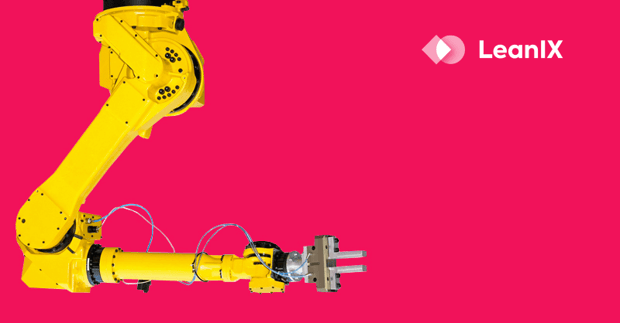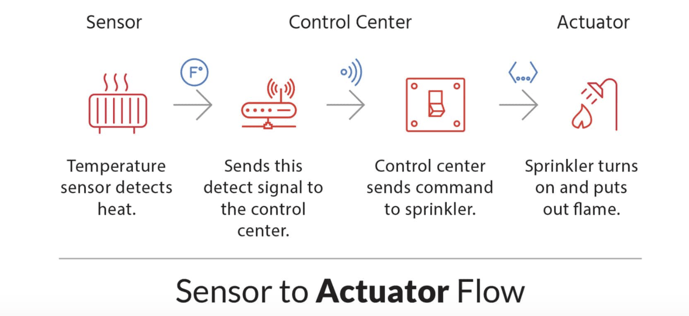
What is IoT?
The Internet of things is defined as a paradigm in which objects equipped with sensors, actuators, and processors communicate with each other to serve a meaningful purpose. IoT could also be looked at as simply an interaction between the physical and digital world. Once stand-alone devices and applications now have the potential to be connected to a network through sensors, actuators, processors, and transceivers.
Actuators and sensors are devices that enable interaction with the physical world.
For example, Moti is an actuator. Moti creates smart motors and apps for robots. Attach the smart motor to anything, add power, and Moti gives you the ability to control the item from your desktop browser. Actuators are devices that are used to manipulate the physical environment, such as the temperature control valves used in smart homes. Actuators take electrical input and transforms the input into tangible action. These technologies collect a high amount of data, which can be very valuable and useful to an enterprise once it has been stored, organized, and processed.
Simply put, IoT isn’t just one technology – but a combination of various deeply connected technologies. 
Source: Bridgera
Many challenges come with the data collection, handling, communication, and processing of the data. These IoT devices collect a high amount of information, and it is up to the end user to decide which data is relevant for their situation, which places to process or store it, and the desired communication level. Storage, pre-processing, and processing of data can be done on a remote server or on the edge of the network itself.
Sensors, actuators, compute servers, and the communication network forms the core infrastructure of an IoT Framework. At times, other pieces of technology are needed such as middleware. Middleware is software that acts as a bridge between an operating system or database and applications, especially on a network. Middleware can be used to connect and manage all autonomous IoT components.
The Three-Layer Architecture of an IoT-System
Layer one consists of wireless sensors and actuators. Layer two includes the addition of sensor data aggregation systems and analog-to-digital data conversion. In layer 3, the data is fed to or used to improve an application.
Layer 1: Physical
Sensors collect data from the environment or object under measurement and turn it into useful data. This stage of the IoT is expanding rapidly, with robotic camera systems, water level detectors, home voice controllers, air quality sensor, smart baby monitoring devices, etc.
All of these devices will collect user data, including sign-on times, level and hours of usage, location statistics, etc. As these devices produce an avalanche of data, it will be important to your organization to choose which data is useful to you and which can be ignored. Enterprises can expect a surge in data velocity, and with that surge, organizations will benefit from moving their data into the cloud. Some data should be processed immediately, i.e., time-sensitive data – threat detection, immediate crash statistics, abrupt shutdowns, etc. Otherwise, data that will undergo deep processing and analyzation should be pushed directly to the cloud, to avoid network clutter.
Layer 2: Network
Data collected from the sensors or actuators is very raw. This data has to be aggregated and converted into digital streams for further data processing. To carry out this data processing, it is imperative to use a data acquisition system (DAS or DAQ). Data acquisition is the process of sampling signals that measure real world physical conditions and converting the resulting samples into digital numeric values that can be manipulated by a computer. Data acquisition systems typically convert analog waveforms into digital values for processing.
The DAS connects to the sensor network, aggregates outputs, and performs the analog-to-digital conversion. The Internet gateway receives the aggregated and digitized data and routes it over Wi-Fi, wired LANs, or the Internet, to Stage 3 systems for further processing.
Layer 3: Application
This layer is responsible for delivering application specific services to the user. Once data has been aggregated, cleaned, and surveyed, the information can be fed to the server to be analyzed and applied to new products and services.


/EA-Manufacturing-WhitePaper_Resource_Page_Thumbnail.png?width=140&height=99&name=EA-Manufacturing-WhitePaper_Resource_Page_Thumbnail.png)
/EA_24Views_Manuf_Industry_Poster_Resource_Page_Thumbnail.png?width=140&height=99&name=EA_24Views_Manuf_Industry_Poster_Resource_Page_Thumbnail.png)
